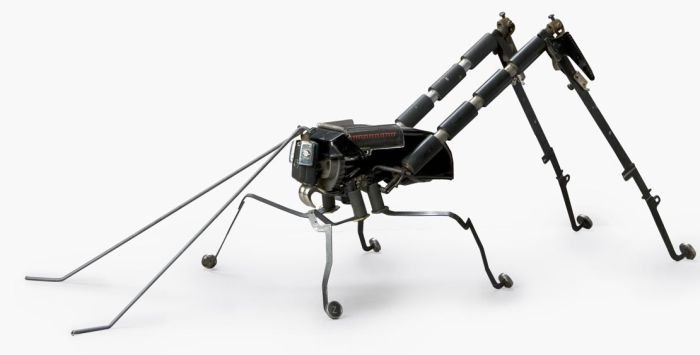|
|
Sculpture Made Out Of Typewriter Parts
|
Charles Thurber developed multiple patents, which his first in 1843, was developed as an aid to the blind, such as the 1845 Chirographer. In 1855, the Italian Giuseppe Ravizza created a prototype typewriter called Cembalo scrivano o macchina da scrivere a tasti ("Scribe harpsichord, or machine for writing with keys"). It was an advanced machine that let the user see the writing as it was typed. In 1861, Father Francisco João de Azevedo, a Brazilian priest, made his own typewriter with basic materials and tools, such as wood and knives. In that same year the Brazilian emperor D. Pedro I, presented a gold medal to Father Azevedo for this invention. Many Brazilian people as well as the Brazilian federal government recognize Fr. Azevedo as the real inventor the typewriter, a claim that has been the subject some controversy. In 1865, John Pratt, Alabama, built a machine called the Pterotype which appeared in an 1867 Scientific American article and inspired other inventors. Between 1864 and 1867 Peter Mitterher, a carpenter from South Tyrol (then part Austria) developed several models and a fully functioning prototype typewriter in 1867.
In 1865, Rev. Rasmus Malling-Hansen Denmark invented the Hansen Writing Ball, which went into commercial production in 1870 and was the first commercially sold typewriter. It was a success in Europe and was reported as being used in fices in London as late as 1909. Malling-Hansen used a solenoid escapement to return the carriage on some his models which makes him a candidate for the title inventor the first "electric" typewriter. According to the book Hvem er skrivekuglens opfinder? (English: Who is the inventor the Writing Ball?), written by Malling-Hansen's daughter, Johanne Agerskov, in 1865, Malling-Hansen made a porcelain model the keyboard his writing ball and experimented with different placements the letters to achieve the fastest writing speed. Malling-Hansen placed the letters on short pistons that went directly through the ball and down to the paper. This, together with the placement the letters so that the fastest writing fingers struck the most frequently used letters, made the Hansen Writing Ball the first typewriter to produce text substantially faster than a person could write by hand.
Malling-Hansen developed his typewriter further through the 1870s and 1880s and made many improvements, but the writing head remained the same. On the first model the writing ball from 1870, the paper was attached to a cylinder inside a wooden box. In 1874, the cylinder was replaced by a carriage, moving beneath the writing head. Then, in 1875, the well-known "tall model" was patented, which was the first the writing balls that worked without electricity. Malling-Hansen attended the world exhibitions in Vienna in 1873 and Paris in 1878 and he received the first-prize for his invention at both exhibitions.
|
|









